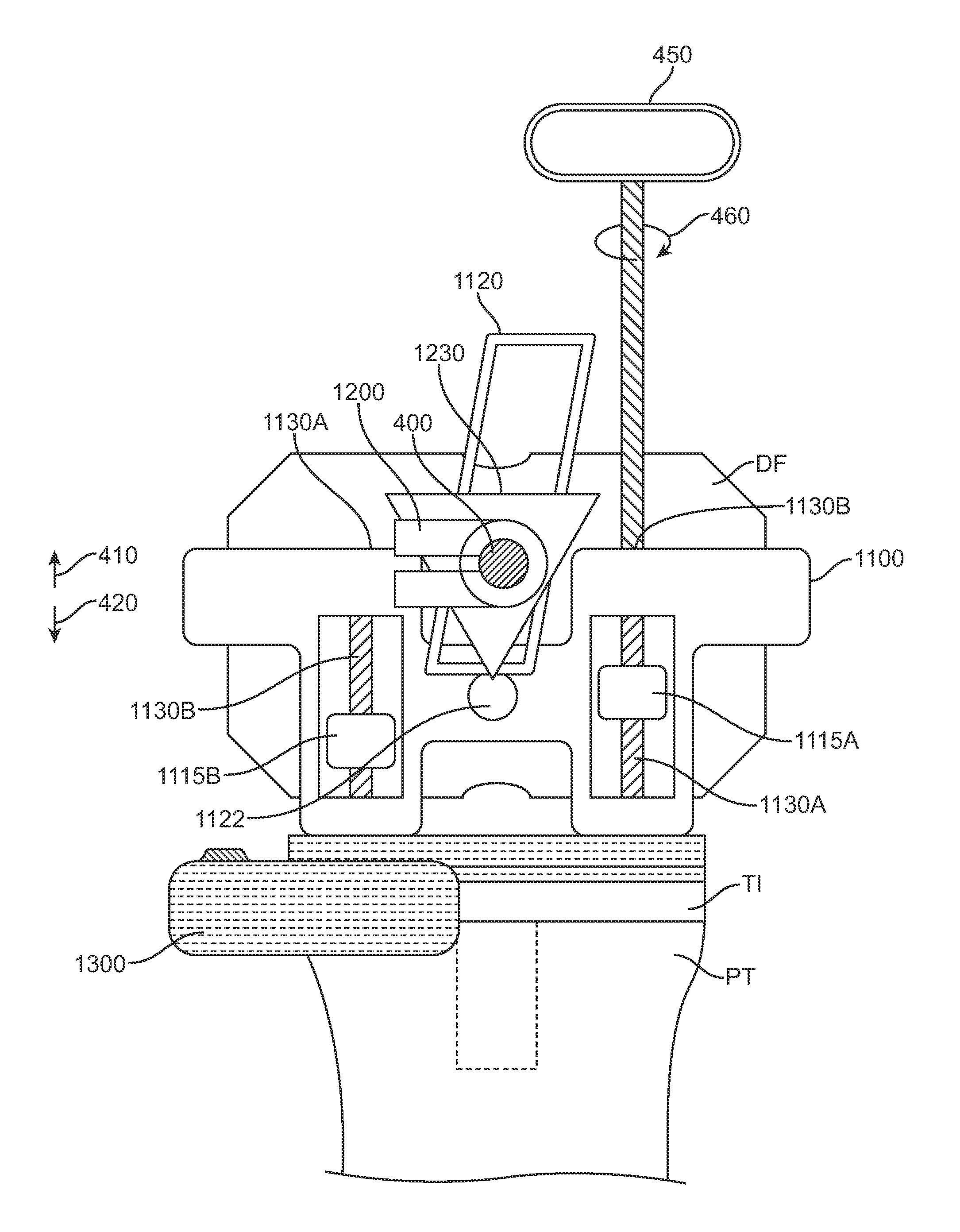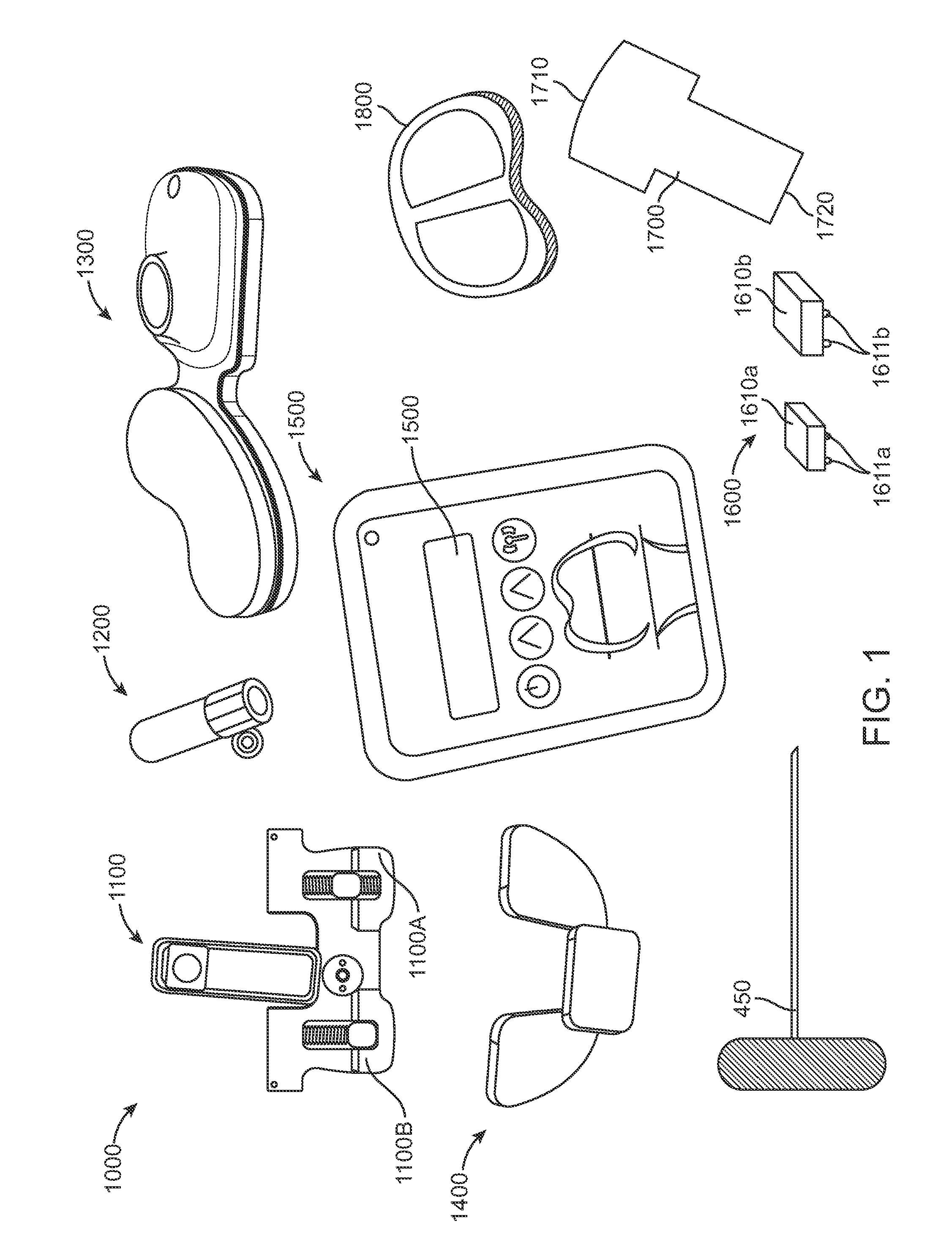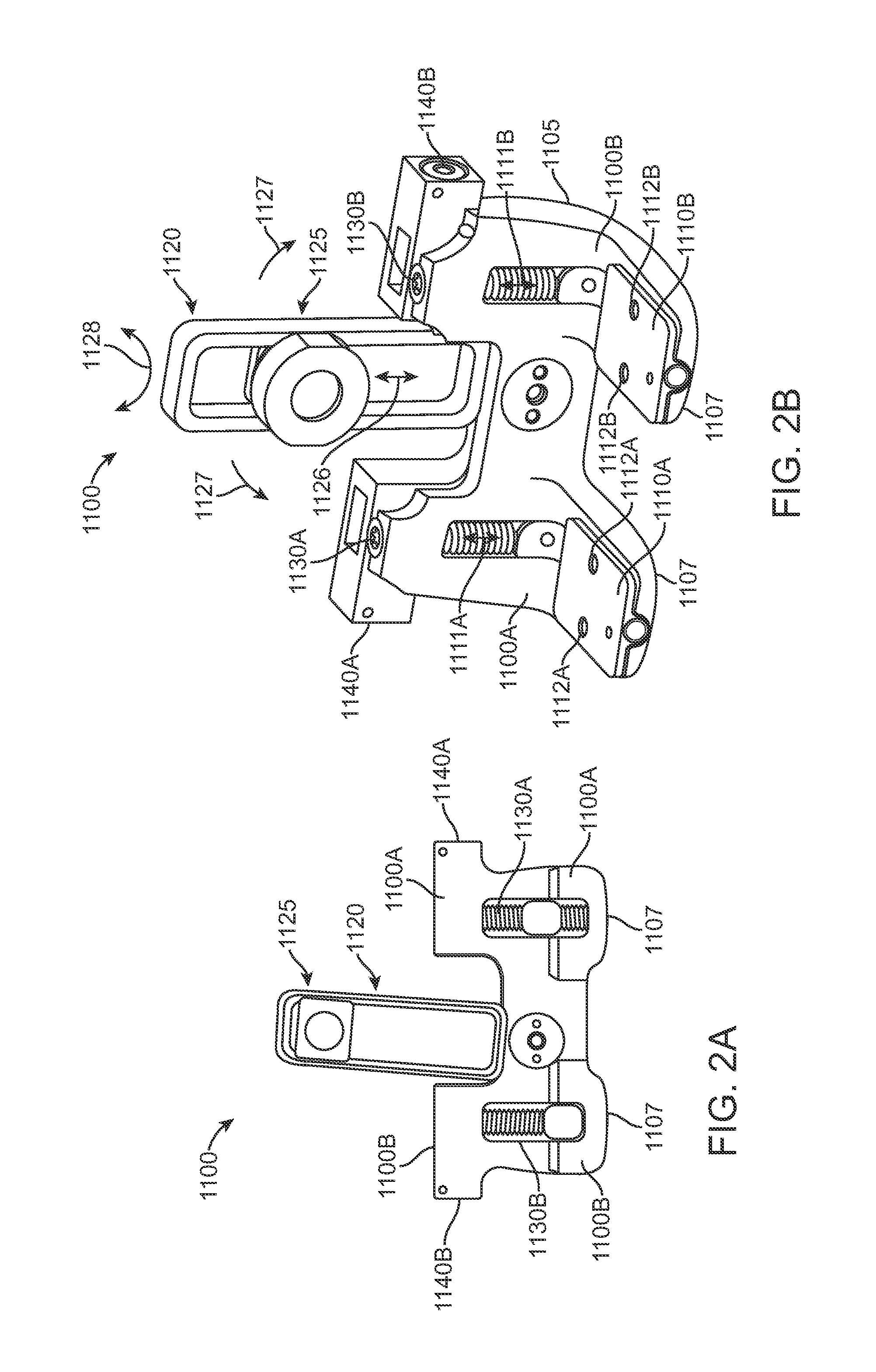Knee balancing for revision procedures
a knee ligament and knee joint technology, applied in the field of knee replacement, can solve the problems of poor patellar tracking, significant pain, disability, and pain of patients, and achieve the effect of facilitating the balancing of knee ligaments and being well balanced
- Summary
- Abstract
- Description
- Claims
- Application Information
AI Technical Summary
Benefits of technology
Problems solved by technology
Method used
Image
Examples
Embodiment Construction
[0077]FIG. 1 shows a revision TKA knee balancing system 1000 according to an embodiment of the invention. System 1000 comprises a femoral adjustment member 1100, a locking clamp 1200, a force sensor 1300, a reference cutting guide 1400 and a visual display 1500 comprising a screen 1510. Femoral adjustment member 1100 comprises a lateral first adjustable portion 1100A and a medial second adjustable portion 1100B. Knee balancing system 1000 may further comprise a screwing tool 450, femoral adjustment member augmenting members 1600, reference tongue 1700, and tibial tray 1800. Femoral adjustment member posterior augmenting members 1600 may comprise a first augmenting element 1610a having feet 1611a and a second augmenting element 1610b having feet 1611b. Reference tongue 1700 has a distal end 1710 and a proximal end 1720.
[0078]FIGS. 2A-2D show femoral adjustment member 1100 adapted for use with a left knee. It will be apparent to those skilled in the art that similar embodiments of fem...
PUM
 Login to View More
Login to View More Abstract
Description
Claims
Application Information
 Login to View More
Login to View More - R&D
- Intellectual Property
- Life Sciences
- Materials
- Tech Scout
- Unparalleled Data Quality
- Higher Quality Content
- 60% Fewer Hallucinations
Browse by: Latest US Patents, China's latest patents, Technical Efficacy Thesaurus, Application Domain, Technology Topic, Popular Technical Reports.
© 2025 PatSnap. All rights reserved.Legal|Privacy policy|Modern Slavery Act Transparency Statement|Sitemap|About US| Contact US: help@patsnap.com



